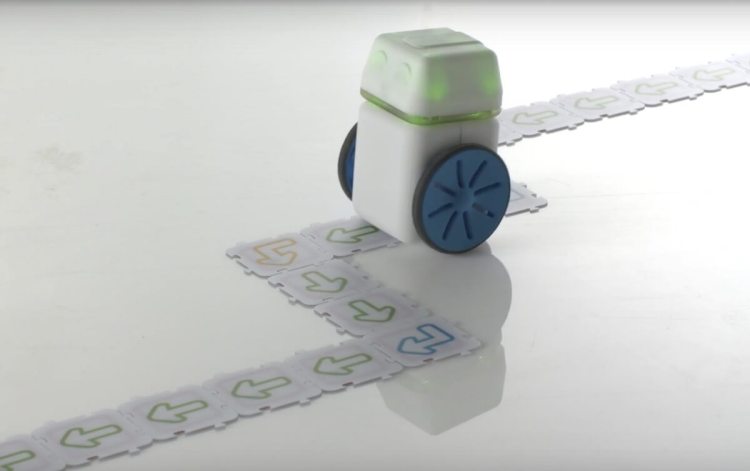Kubo Robot wants to teach your kids to code. And to get started on that goal, the Danish company is launching a crowdfunding campaign on Indiegogo.
The Copenhagen, Denmark-based company wants to raise $30,000 on Indiegogo to get feedback on its design for Kubo, a robot that teaches kids to code. The idea is that if a child can complete a jigsaw puzzle, then they can learn to code. I saw the company demo the tech at CES 2017, the big tech trade show in Las Vegas last week.
Kubo will ship in the spring of 2017. The company has created a TagTile programming language, which enables children as young as three to explore and understand programming concepts in a screenless, tangible environment. You can connect tiles together on a table and create the basic instructions for the robot to move around.
The TagTile programming language consists of colored puzzle pieces that give Kubo instructions. Preschool and elementary school children connect the tiles in the order they want Kubo to perform each action. Kubo wheels along the tiles and reads the directions, and when placed on a “play” tile, acts out the sequence. Through this process, children learn programming concepts like loops, functions, routines, subroutines, and more.

Above: Kubo is designed to help kids learn how to code.
Kubo expansion packs will teach other lessons. Using different sets of TagTiles, children can learn to spell, add and subtract, or even string together a melody. With sets of TagTiles for language, mathematics, and music, in addition to coding, Kubo hones children’s critical thinking, communication, collaboration, and creativity, while teaching them technology without screen time.
“Kids are surrounded by technology, but most are simply consuming video or text through a screen. We want to make them creators, not consumers,” said Tommy Otzen, CEO and cofounder of Kubo Robot, in a statement. “By 2034, 47 percent of jobs will be automated. Our children will be living and working alongside robots and technology. They need to learn from an early age how to interact with that technology, and coding gives them the skills to do so.”
Each Kubo robot comes with a set of TagTiles and is easily upgradable. You can swap out Kubo’s head and add new functionality. The only assembly Kubo requires is to connect the robot’s head to its body and lay out the tiles. It’s quick to set up, giving teachers more time for lessons, and intuitive enough that any parent or teacher can impart the principles of coding without any technical knowledge of their own.

Above: Kubo helps kids get started on coding early.
“Most teachers and parents aren’t engineers, but most engineers aren’t educators either,” said Daniel Lindegaard, chief technology officer and cofounder of Kubo Robot, in a statement. “Unlike most educational technology, Kubo is designed around pedagogical principles instead of engineering principles, and gives every classroom and household the tools that will prepare children to lead in the 21st century.”
Early backers of KUBO’s Indiegogo campaign can preorder Kubo for their children or classrooms starting at $170. Rivals include Lego’s Boost robots.


